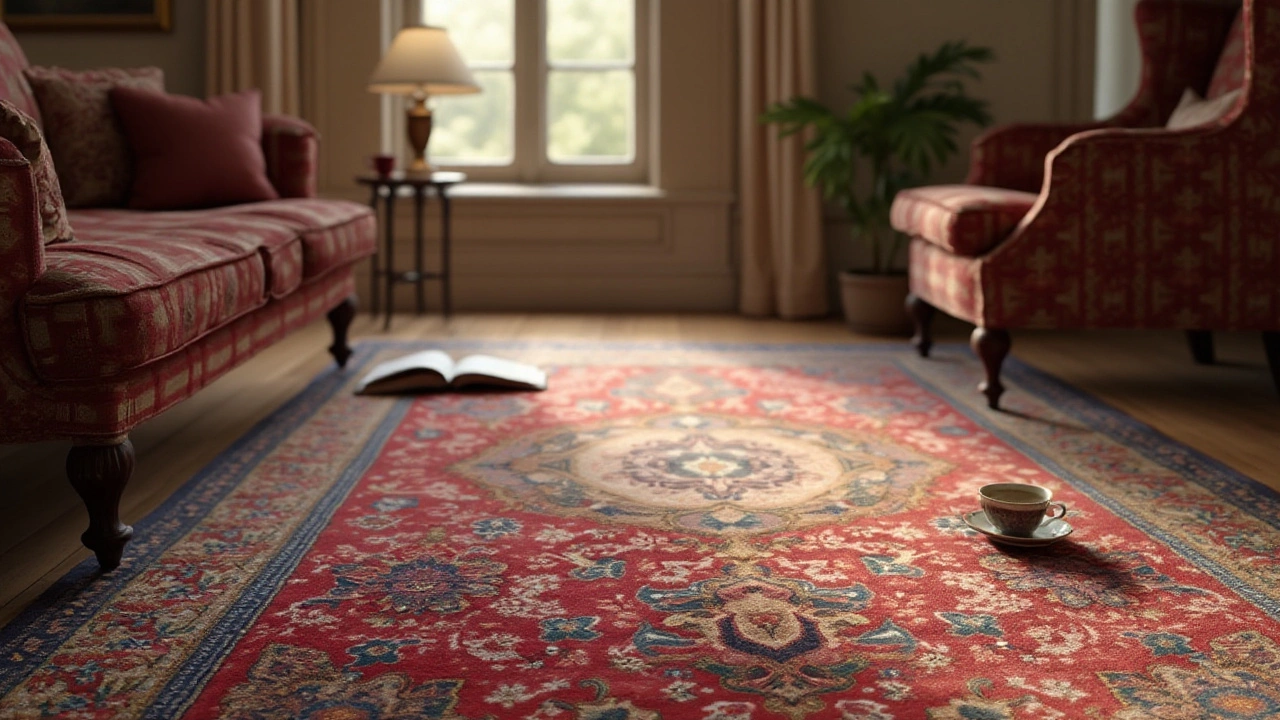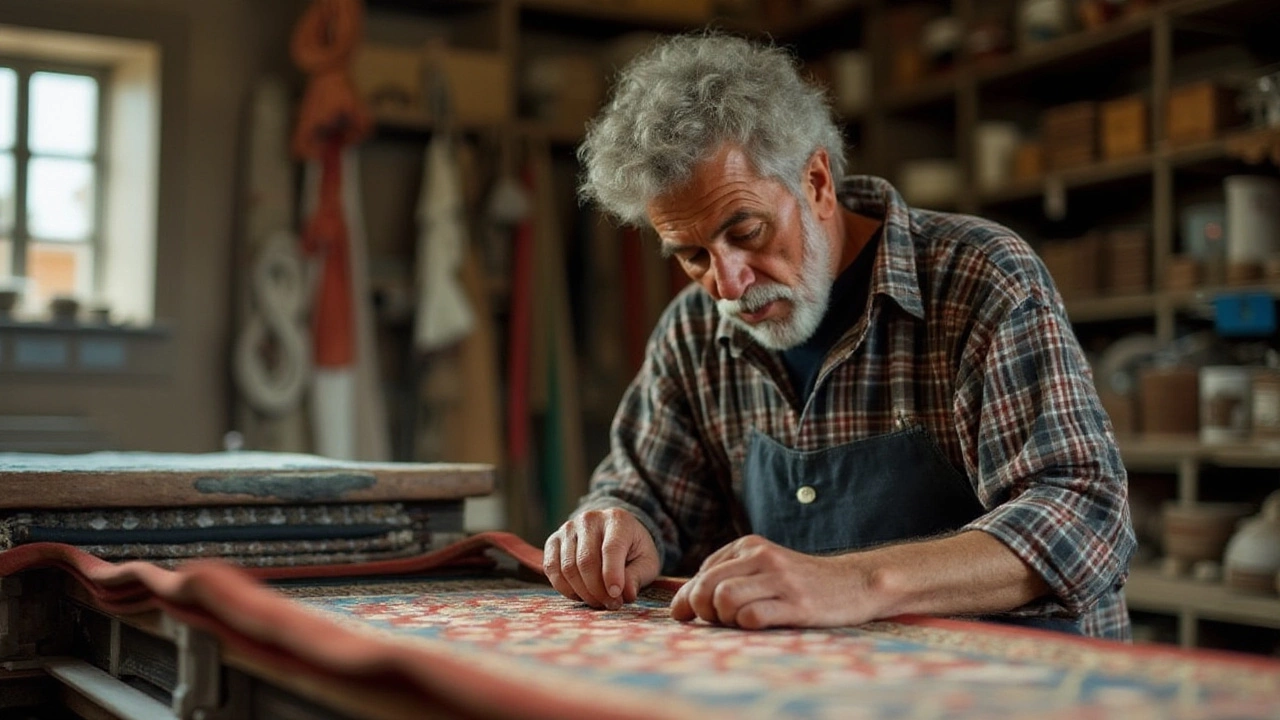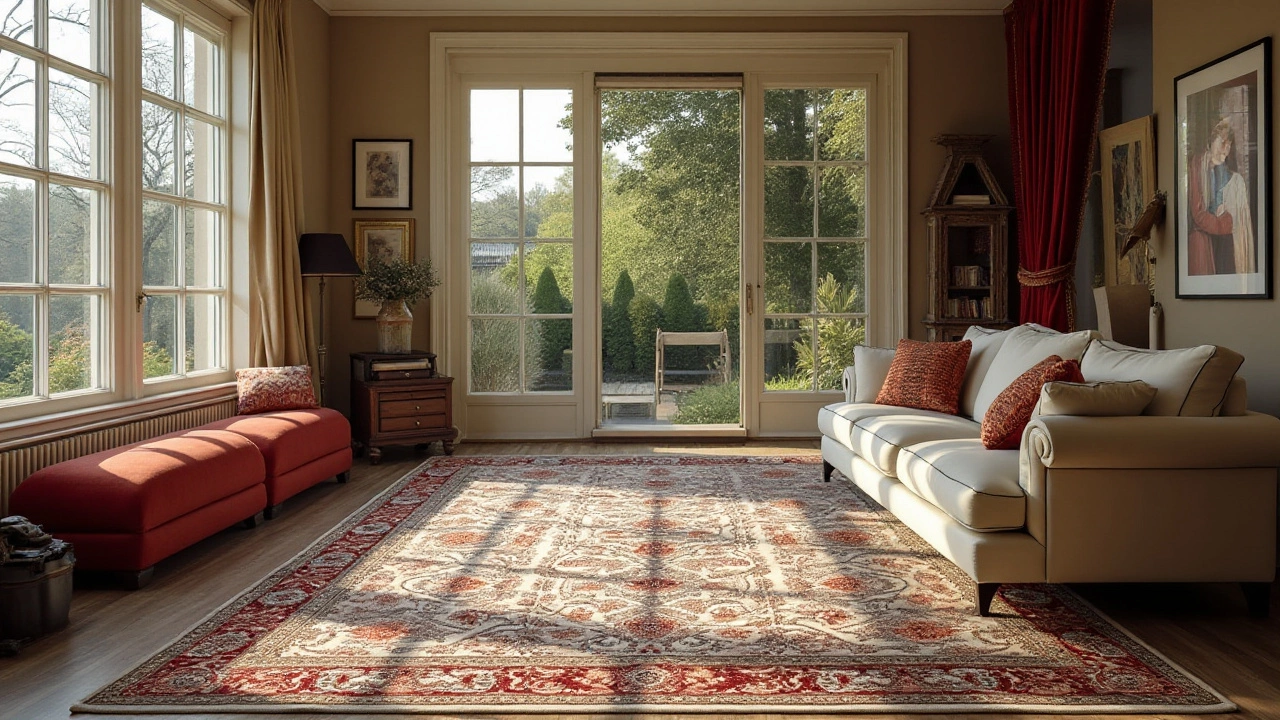Essential Tips to Identify High-Quality Rugs

Rugs have been a staple of home decor for centuries, adding warmth and character to living spaces across the globe. Understanding the intricacies of rug quality can make a big difference when choosing the perfect piece for your home.
From the type of material to the processes involved in weaving, the quality of a rug is determined by various factors. Recognizing these factors empowers you to make informed choices, ensuring your chosen rug not only beautifies your space but also lasts for years to come.
Understanding Rug Materials
Riding the waves between aesthetics and functionality, the material of a rug serves as the very backbone of its quality. When selecting a high-quality rug, one must consider the materials used, for they dictate not only the texture and appearance but also the durability and price.
Wool, a timeless choice, offers warmth and resilience. Renowned for its durability and comfort, wool rugs are a staple in many homes around the world. Wool fibers are naturally stain-resistant and possess remarkable insulating properties, which make them an excellent choice for high-traffic areas. However, wool may shed initially, but this characteristic diminishes over time, giving way to a softer, more lustrous rug that can last a lifetime. Such remarkable durability justifies the relatively higher price point of wool rugs.
An alternative to wool is silk, an epitome of luxury and elegance. Silk rugs are often sought after for their stunning sheen and softness. They are frequently used in formal settings as exquisite displays of artistry. Due to the delicacy of silk, these rugs require more care, as they are prone to damage from heavy use. Interestingly, many rugs incorporate a blend of silk and wool to strike a balance between silk's shine and wool's toughness, providing the best attributes of both materials.
Cotton stands as a straightforward, economical choice for rug enthusiasts. Often used as a backing for intricate hand-knotted rugs, cotton helps maintain the rug's shape and is easy to clean. While cotton rugs are not as plush as wool or silk, their affordability and resilience make them a popular choice for kitchen or bathroom areas where ease of washability is key. Additionally, cotton provides a canvas for vibrant dyes, yielding striking patterns that pop.
For those seeking a budget-friendly and environmentally conscious option, synthetic fibers like nylon, polyester, or polypropylene might be ideal. These man-made materials mimic the appearance of natural fibers and are often treated to be stain-resistant and easy to clean. Unlike natural fiber rugs, those made from synthetic materials are less inclined to fade in sunlight and can be utilized in areas exposed to light. They are generally lighter and more affordable, yet they may not possess the same luxurious feel or longevity of their natural counterparts.
"A rug can serve as the anchor of the room, and its quality hinges on the material you choose," suggests renowned interior designer Sheila Bridges. "Natural fibers invariably trump synthetics in terms of timeless elegance."
Recognizing the types of materials used in rug construction equips buyers with better guidelines for selecting a rug that meets their aesthetic desires and lifestyle demands. By understanding how these materials affect a rug's appearance, feel, and function, one can more confidently make purchase decisions that ensure beautiful, enduring additions to their home decor.

The Weaving Process
In the complex world of rug-making, the weaving process is where tradition meets artistry. This essential step defines both the appearance and durability of a high-quality rug. Weaving involves interlacing threads into fabric, but beyond this simple definition lies a sophisticated skill that has been honed over centuries. The techniques used, such as hand-knotting, hand-tufting, and machine weaving, each bring their unique set of characteristics and quality factors. Though it's possible to find elegant rugs made by machines, it is the hand-woven pieces that often garner the most admiration, reflecting a human touch that machine precision just can't replicate.
Hand-knotting is an intricate process that requires time, patience, and remarkable skill. It is this technique that typically separates high-quality rugs from their mass-produced counterparts. In hand-knotting, every single knot is tied individually by skilled artisans, often taking months or even years to complete a single piece. This procedure not only ensures the durability of the rug but also reveals stunning details in its design. As a result, each hand-knotted rug is a unique masterpiece, carrying with it a timeless elegance and lasting value. As Ralph Lauren once said:
"A great rug can completely change the mood of a room."
Machine Weaving vs. Hand Weaving
In contrast to hand-crafted methods, machine weaving employs automated looms and is the choice for producing rugs quickly and efficiently at a lower cost. While these rugs may lack the personal touch and slight imperfections that characterize handmade items, they still offer diversity in design and accessibility in price. When selecting between these techniques, consider factors such as budget, intended use, and personal preference for texture and craftsmanship. Each option presents unique advantages, but understanding these differences will lead you to the right choice for your home.Factors Affecting Quality
Beyond the methods, the quality of a rug depends on the density of knots or stitches per square inch. Usually, a higher knot density equates to better quality, as it implies a finer weave, resulting in more detailed and precise designs. Here's an insight commonly shared by rug experts: a density of over 300 knots per square inch is generally considered a hallmark of excellence in hand-knotted rugs. This intricate workmanship doesn't just result in eye-catching patterns but also greatly extends the longevity of the rug, especially in high traffic areas. As you explore the diverse offerings in the market, remembering this key fact could steer you toward the best investment for your home.
Durability and Longevity
When it comes to selecting a rug for your home, understanding rug quality isn't just about aesthetics; it's about ensuring that your investment will stand the test of time. Rugs contribute significantly to the ambience of a room, and part of their charm lies in their ability to gracefully endure years of foot traffic, sunlight exposure, and all life's little accidents. Thus, durability and longevity are essential considerations when evaluating whether a rug is of high quality.
The material from which the rug is made plays a crucial role in determining its durability. Wool, for instance, is widely regarded as one of the best materials for rugs due to its natural resilience and elasticity. It can withstand significant wear without losing its shape or softness. Natural fibers such as wool also tend to hide dirt better, a feature not to be overlooked if the rug will be placed in a high-traffic area. In fact, wool rugs have been known to last tens, if not hundreds, of years when properly maintained. This is in stark contrast to synthetic fibers, which, while more affordable, often wear out more quickly and lack the rich texture and depth of color offered by their natural counterparts.
"A well-made wool rug can last a lifetime and even longer with proper care,» says interior decorator Jane Smith, a renowned expert in textile conservation. "Think of it as a lifetime investment rather than a simple decor piece."
Another crucial factor for high-quality rugs is the weaving technique employed. Hand-knotted rugs, for example, are renowned for their durability. The knot count per square inch can provide insight into longevity; higher knot counts often indicate more durable rugs. A traditional Persian rug, which might feature an intricate design woven over several months or years, embodies this principle. The craftsmanship involved ensures that each knot is securely in place, making the rug resistant to unraveling, even with frequent use.
Consider the Rug's Intended Use
Contemplating the intended use of your rug is another vital aspect when assessing durability. If placed in a frequently used entryway, opt for rugs that boast tightly woven fibers and dark colors that can easily camouflage mud and stains. Conversely, for a decorative piece sitting under a dining table or in a formal living room, you might prioritize richness of design and texture. Therefore, aligning your rug choice with its intended purpose can significantly extend its lifespan.
Rug buying tips also suggest regular maintenance to enhance durability. Vacuuming regularly removes dirt and debris trapped in fibers, preventing abrasion. Periodically rotating the rug can also mitigate uneven wear from foot traffic. Additionally, professional cleaning every few years can rejuvenate fibers and restore vibrant colors. Investing time in these maintenance practices can dramatically increase the lifespan of your rug, preserving its beauty and functionality for years.

Design and Craftsmanship
When you are gazing upon a rug, the sheer beauty of its design can be captivating. The artistry involved in creating a high-quality rug is nothing short of remarkable, and understanding what makes a rug stand out requires a closer look at its design as well as craftsmanship. High-quality rugs often tell a story through their intricate patterns and color schemes, reflecting not only the skill of the weaver but also cultural narratives. These stories can sometimes be traced back to specific regions known for specialized weaving techniques, such as Persian or Oriental rugs, which are famed for their rich history and vibrant designs. Each knot meticulously tied in the making of such rugs is a testament to dedication and artistry.
A critical factor in assessing the craftsmanship of a rug is its knot density, which refers to the number of knots per square inch. The rule of thumb is simple: the higher the knot count, the finer the design detail and the greater the durability. Rugs boasting at least 200 knots per square inch are typically considered top-tier, with some exquisite pieces having an impressive 1,000 knots per square inch, making them akin to woven fabric artworks. Such intricate work requires significant time investment and expertise, often taking months or years to complete a single rug.
In terms of design, one should pay attention to the symmetry and alignment of patterns, indicating precision in craftsmanship. High-quality rugs exhibit perfectly aligned motifs and borders, with patterns flowing seamlessly across the whole piece. It's insightful to observe how colors interact within these designs, as the best rugs use traditional dyeing processes that involve natural dyes, contributing to their lustrous appearance and resistance to fading over time. The subtle hues and deep color saturation achieved through these methods are hallmarks of excellence that mimic nature's palette.
Exclusive Insights from Experts
Expert weavers often emphasize the cultural significance embedded within a rug's design. Jennelle L. Motta, a renowned textile historian, once noted, "A rug is not just a furnishing; it's a narrative written in yarn."
A traditional rug’s pattern can encapsulate generations of stories, mirroring the societal values, historical events, and even spiritual beliefs prevalent at the time of its creation.Such reflections provide depth and context to a rug, turning it into a conversation piece that carries the essence of far-off lands and times.
For those interested in making an educated purchase, attending auctions or visiting galleries where antique and rare rugs are showcased can be an enriching experience. Retailers specializing in exotic rugs often provide valuable insights into a piece's origin and the techniques used in its creation, which is crucial information for collectors and enthusiasts. Asking the right questions, such as the origin of materials and the use of traditional vs. modern techniques, yields a greater appreciation of what you're investing in. Thus, choosing a good rug ensures you are not only enhancing your decor but also preserving a piece of cultural heritage.